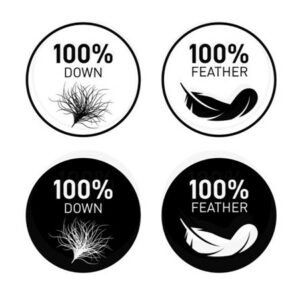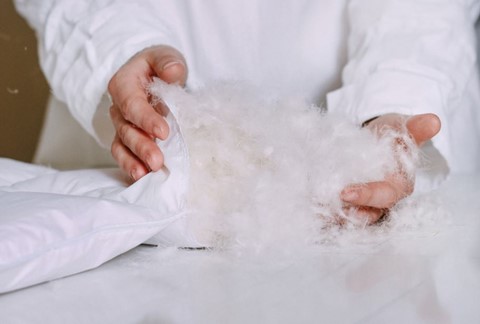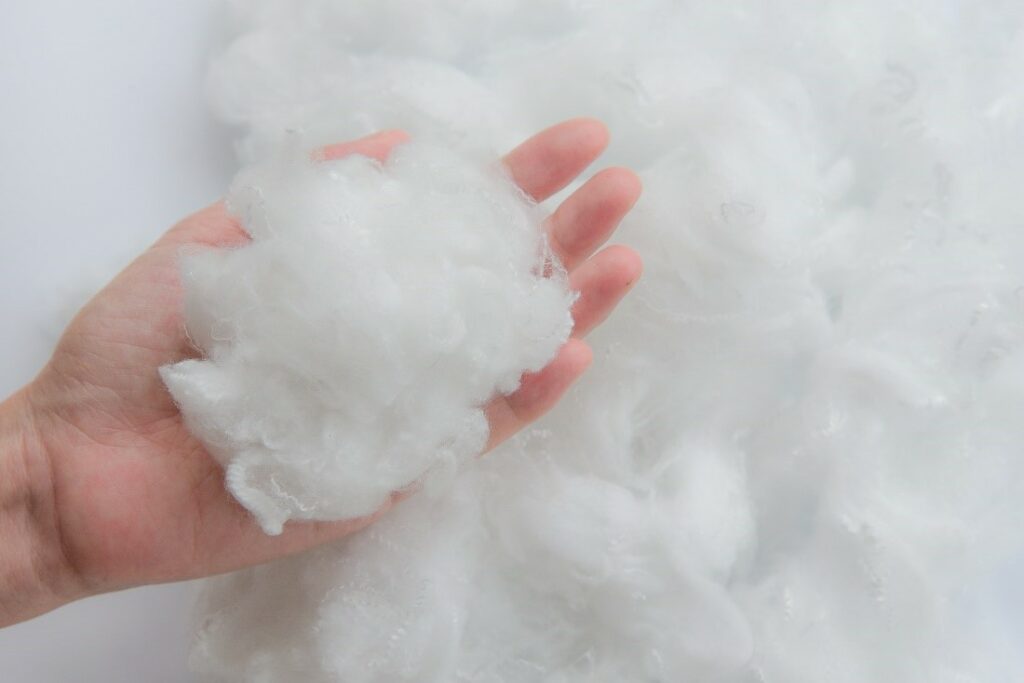
October 8, 2021
Tips and tricks for selecting winter jackets with superior insulating properties.
As Canadians, we are all too familiar with the extreme cold and bone-chilling winds that arrive every year with the start of the winter season. In most areas of the country, temperatures can remain sub-zero for upwards of six months… brrrrr!!! Without the proper equipment and winter clothing to combat these cold temperatures, winter can be extremely unpleasant and potentially lead to severe injury or even death if exposure to the elements continues for an extended period 1. Most of our ability to endure these grueling temperatures is dependent on our winter jackets, hats, mittens, and anything that will provide us with a buffer against the biting winter winds and blowing snow. Without a sufficiently thermally insulated winter jacket, the risk of frostbite or hypothermia would increase dramatically for the consumer. This is why selecting the right insulation material is crucial for staying comfortable and warm all winter long.
The most important role of a winter jacket is to block heat transfer between an individual and their cold surrounding environment. Heat can be transferred through many different ways, including conduction, convection, and radiation, all of which are very important for winter jacket designers to consider when engineering outdoor protective gear. A number of different naturally or synthetically derived textiles have been incorporated into the design of thermally insulative outerwear to restrict heat loss for extended periods. One of the most important properties that these materials share is theirlow thermal effusivity. Ideally, when designing the most durable and insulative winter jacket, you would want a material with a low thermal effusivity and a low thermal conductivity.
Effusivity is described as the rate at which a material can absorb heat 2. This thermal property is inversely correlated with thermal conductivity, which describes a material’s ability to transfer heat through it effectively. Thermal effusivity combines the idea of heat capacity (how willing a material loses heat to its surroundings) and thermal diffusivity (how quickly a material willingly gives away heat) 3. These thermal properties are constantly impacting the way we touch and interact with our surroundings every day. They explain why a metal feels colder to the touch than a warm fuzzy blanket or why a metal thermos will keep your coffee warmer than a ceramic mug. The thermal conductivity of the fabric used to make the blanket is much lower than that of metal, so it holds on to heat more efficiently and makes us feel warm and cozy when we curl up in it.
One application of thermal effusivity is the quasi-qualitative measurement of coolness or warmth feel of materials on textiles and fabrics. When a textile or fabric is measured from the surface with short test times by any transient method or instrument, the measured effusivity includes various heat transfer mechanisms, including conductivity, convection and radiation, as well as contact resistance between the sensor and sample. As the dominant property in the thermal effusivity expression is thermal conductivity, which is valid for solids only, the term used to properly describe the measured value is thermal conductance. When considering this point in terms of thermal effusivity, the more appropriate term becomes thermal effusance. With this understanding, thermal conductivity should never be backed out of the thermal effusivity expression. This is an important fact when considering qualitative use of thermal effusivity for testing non-solids.
Air has a relatively low thermal conductivity; however, it is very mobile, which naturally increases the rate of heat transfer between you and your surrounding environment 3. Wind chill is not a weather reporting to be taken lightly and is one of the many reasons why winter textiles are designed to be as wind-resistant as possible. Some other important environmental factors to consider when selecting outdoor clothing include humidity and precipitation. Water is a superior thermal conductor than air, and if clothing is damp or wet due to rain, sweat, or immersion, the water molecules will occupy most of the air pockets between the fibers of the clothing, which directly results in a significant increase in heat loss 4.

Figure 1: Canadian winter weather.
Ideally, the material a winter jacket is made of should protect the wearer from wind, water, and snow, but this is easier said than done. The correct combination of fabrics to check all of these boxes is extremely difficult to find, and many thermally insulative materials are costly to harvest or produce. A preferred material among many manufacturers and consumers is down. Down is a natural material harvested from geese and duck plumage and refers to the soft plume or cluster of materials that resides right next to the bird’s skin 3. Down is unique because it is very fluffy and doesn’t have the long pointy stems found in most other feather types. Pure down is normally mixed with other more “typical” feathers to reduce the cost for manufacturers. A higher ratio of down clusters to feathers is ideal but will also significantly raise the garment price. A good standard to go by when selecting a down/feather mix is roughly a 70:30 ratio for down to classic feathers with premium quality classified as a mixture containing over 80% down. It is an extremely effective insulator and is relatively easy to compress, making down a highly sought-after material for backpackers and travelers.

Figure 2: Symbols used to indicate the fill of a jacket (down vs feathers).
Down has an average thermal resistance of 0.21 – 0.3 m²(°C/W) 4. One of the largest issues with down is completely unrelated to its thermal properties and has to do with how the material is obtained. The harvesting of down has been deemed by many as unethical; however, large manufacturers such as North Face and Patagonia are pushing towards harvesting the plumage used for their winter garments more sustainably and ethically, inflicting little harm on the animals. As consumers, it is important to expand our definition of quality beyond a winter garment’s functionality and distribute our support to companies such as these two that are making strides towards better harvesting methods.
Down products are generally classified according to their fill power and fill weight. Fill power is a universal measurement that indicates the overall quality of the down and is normally represented by a number ranging from 300 – 900. This value directly relates to the number of cubic centimeters one ounce of down will take up when compressed in a cylinder by a calibrated weight 3. High quality down will restrict compression more than low quality down and leaves additional room for air pockets to form between feather clusters. These air pockets provide a low thermal effusivity and block the movement of heat through the material. Winter jackets with a higher fill power also tend to be more comfortable to wear for extended periods. Fill power ratings below the 500 range give the jacket a lumpy and uneven feel. Anything in the 800 – 900 range is considered by industry-standard as premium quality.
Another method used to determine the quality of down is fill weight, measured as the actual amount of down in ounces. Just like fill power, fill weight and quality are not directly correlated. A jacket with a high fill power is not automatically warm because, in reality, it could have a very small amount of material. On the flip side, you could have a very heavy jacket filled with low-quality insulation that would not keep you nearly as warm as a lighter jacket with better quality insulation. It is important to investigate both the fill power and fill weight of a down jacket before purchasing it to ensure that you pay for quality instead of quantity.
Down may seem like the optimal winter jacket insulation material, however, it does not hold up well when it gets wet. The down clusters will form wads of feathers when exposed to water, and you will lose all of the air pockets that trap the warm air in. Down will also take a very long time to dry out once it gets wet and is a difficult material to waterproof because most down jackets require sewn-in pockets called baffles that prevent the down from slumping to the bottom over time.

Figure 3: A comforter being stuffed with down plumage.
Down can be a difficult material to work with so many outdoor clothing companies have found success designing warm and durable garments with other materials. One example of a down alternative is synthetic polyester. This man-made fabric is composed of individual fibers woven in a specific way to create tiny holes that trap warm air close to your body. Synthetics are often heavier than higher-quality down and don’t pack down as small. However, they give the wearer more consistent thermal coverage since baffles are not required to keep sheets of insulation in one place.

Figure 4: Synthetic Polyester.
Columbia is an example of a company that is harnessing the power of thermal conduction and radiation into the design of their outdoor gear 3. In many of their jacket linings, they use a reflective material called Omniheat, designed to have thermal properties similar to those found in NASA thermal blankets. This silvery jacket liner’s main purpose is to reflect the heat radiating off your body back towards you. When standing still, about 87% of your body heat is lost due to the outwards movement of heat in the form of infrared radiation 3. This is a substantial amount of movement of a very specific type of energy. Blocking the outwards radiation of body heat is even more important than preventing heat transfer through conduction, which only accounts for roughly only 13% of the heat flow that is occurring between an individual and their environment. Radiation is a heat transfer mechanism that Omniheat technology takes advantage of and prevents heat loss by blocking the infrared radiation we emit from our bodies.
Another interesting thermal design emerging as an effective winter jacket insulator is the Thermoball technology engineered by North Face. This man-made material aims to harness the light-weighted warmth of down and maintain a resistance to water found in jackets made from polyester blends 4. Thermoball consists of Primaloft synthetic fibers that are spun into millions of tiny balls that cluster in an arrangement similar to feathers. Although Thermoball has yet to surpass the thermal insulation power of natural down, it has a thermal resistance value that is significantly higher than most polyester blends and is much more resistant to water than traditional down blends.
In general, most of the emphasis is placed on the importance of our outer layer of clothing, but what type of fabrics and materials are used to layer underneath can also impact our overall comfort and warmth. Wool is a popular material that is frequently used to make warm winter sweaters due to its naturally high thermal resistance and sweat-wicking abilities. Wool is a great option for a middle layer that will keep you dry and warm in some of the harshest winter conditions and if you want to avoid the “itch” associated with wool, try a merino blend. Fleece is another popular winter material that is made entirely out of synthetic polyester and will be warm and cozy without weighing you down. It is also an ideal fabric to wear in more damp conditions or when exercising in the cold due to its natural moisture-wicking abilities. Another unlikely contender for a thermally resistant underlayer is silk. Silk displays excellent thermal resistance properties but should be avoided being worn as an outer layer because it is extremely light and breathable, allowing cold winter air to pass through it easily.
When exposed to the brutal winter conditions that accompany Canadian winters, the performance of a winter jacket is heavily dependent on its thermal properties. A jacket made from a material with low thermal conductivity and high thermal effusively will be able to prevent heat loss and provide an effective barrier against the cold winter wind. Down has the lowest thermal effusivity compared to other popular outdoor materials; however, it does not perform well when exposed to water and can be very costly and inhuman to harvest. Many companies are working towards engineering artificial down-like materials that behave similarly to the warm plumage clusters but are most cost-effective to produce and respond better when exposed to water. It is also extremely important to layer properly with clothing made from thermal resistant fabrics such as fleece, silk, or wool. Winter is a beautiful time of year, and wearing clothing with effective insulating properties can make a world of difference by making our time spent outside that much more enjoyable.
Cover image: https://unsplash.com/photos/4Hmj9gkyM6c
https://www.shutterstock.com/image-vector/feather-down-icons-776315839
https://www.shutterstock.com/image-photo/woman-hand-holding-polyester-stable-fiber-1192986886
https://www.shutterstock.com/image-photo/production-down-duvets-work-feather-products-1013189131